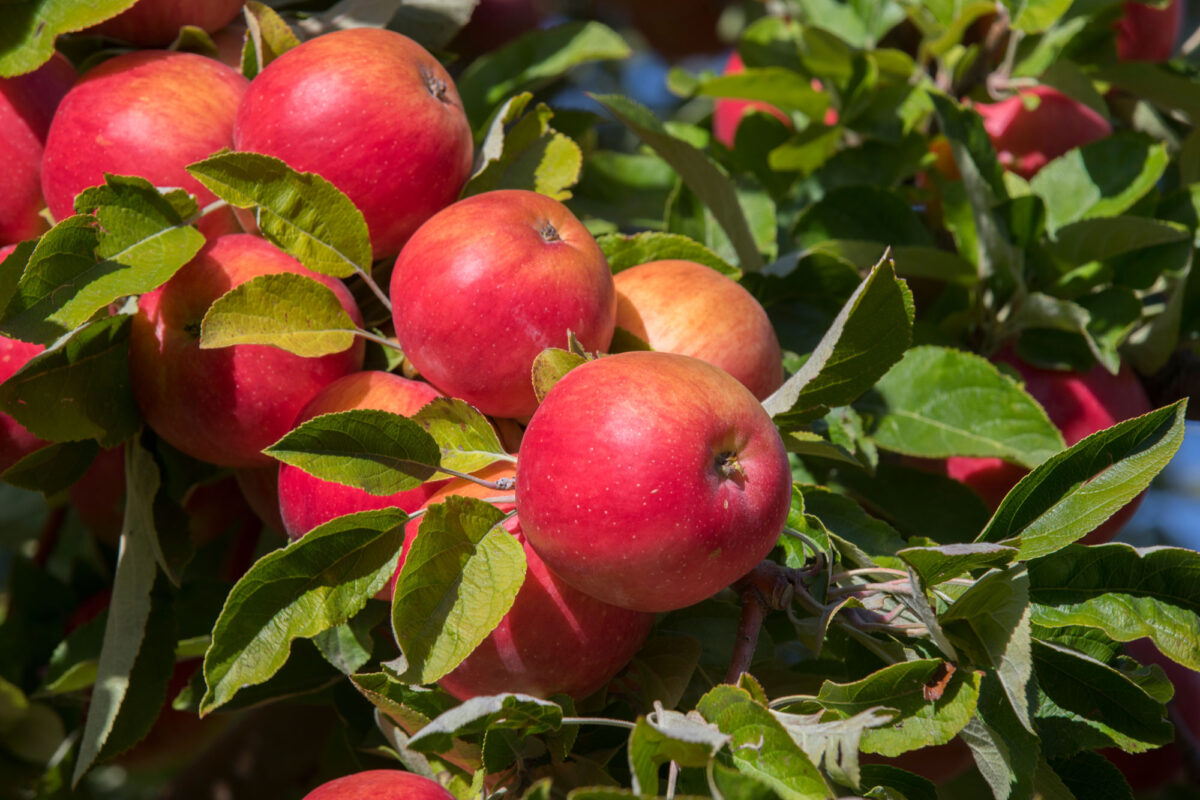Apples are the favorite fruit
Apples are the most consumed fruit in Switzerland: the Swiss eat around 16 kilograms of apples per capita each year. Swiss fruit producers grow many different kinds of apples, and around 20,000 apple strains exist around the world. Gala, Golden Delicious and Braeburn apples are the most popular apple types, but exclusive club varieties like Jazz and Pink Lady are also becoming increasingly prevalent. The cultivation and sale of club varieties are strictly regulated. Older apple varieties like Marbrée de Watervliet and Bernese Rose are currently celebrating a comeback.
There are multiple reasons why apples are so craved. There are apples for every taste bud, and there are lots of ways to eat them: fresh from the tree, in tarts, for dessert or drunk as cider. Modern storage capabilities make Swiss apples available practically year-round.
Pears are also a popular Swiss fruit; over 3 kilograms per capita get consumed each year. Kaiser Alexander, Williams, Gute Luise and Conference are well-known pear varieties. Around 1,500 pear strains exist worldwide, but many of them are available only regionally. Swiss pears are available from August until well into spring. Around half of the pear harvest is used to produce juice, distillates and dried fruit.


